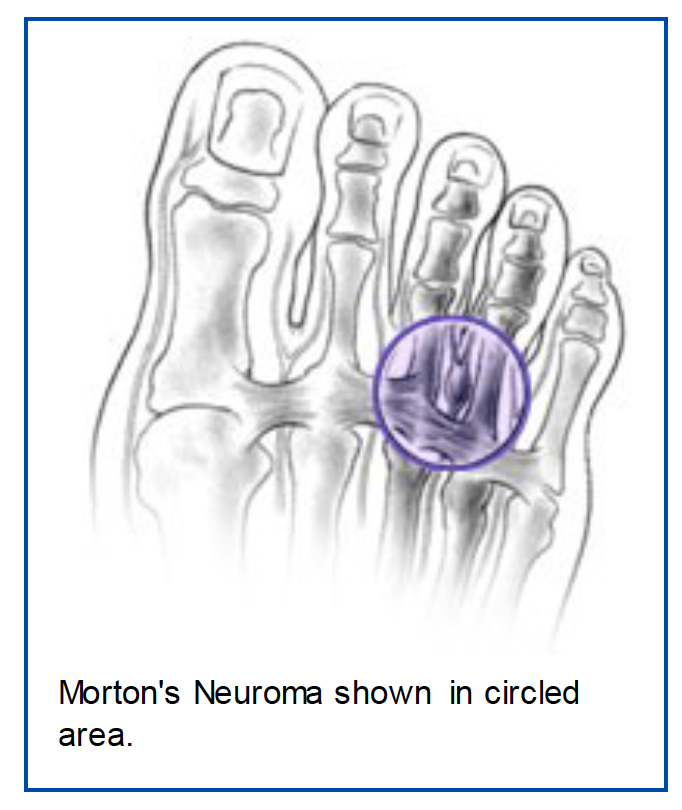If you sometimes feel that you are “walking on a marble,” and you have persistent pain in the ball of your foot, you may have a condition called Morton’s neuroma. A neuroma is a benign tumor of a nerve. Morton’s neuroma is not actually a tumor, but a thickening of the tissue that surrounds the digital nerve leading to the toes.

Definition
Morton’s neuroma occurs as the nerve passes under the ligament connecting the toe bones (metatarsals) in the forefoot. Morton’s neuroma most frequently develops between the third and fourth toes, usually in response to irritation, trauma or excessive pressure. The incidence of Morton’s neuroma is 8 to 10 times greater in women than in men.
Symptoms
- Normally, there are no outward signs, such as a lump, because this is not really a tumor.
- Burning pain in the ball of the foot that may radiate into the toes. The pain generally intensifies with activity or wearing shoes. Night pain is rare.
- There may also be numbness in the toes, or an unpleasant feeling in the toes.
Runners may feel pain as they push off from the starting block. High-heeled shoes, which put the foot in a similar position to the push-off, can also aggravate the condition. Tight, narrow shoes also aggravate this condition by compressing the toe bones and pinching the nerve.
During the examination, we feel for a palpable mass or a “click” between the bones and try to replicate the pain and look for calluses or evidence of stress fractures in the bones that might be the cause of the pain. Range of motion tests will rule out arthritis or joint inflammations. X-rays may be required to rule out a stress fracture or arthritis of the joints that join the toes to the foot.
Treatment
Initial therapies are nonsurgical and relatively simple. They can involve one or more of the following treatments:
- Changes in footwear. Avoid high heels or tight shoes, and wear wider shoes with lower heels and a soft sole. This enables the bones to spread out and may reduce pressure on the nerve, giving it time to heal.
- Orthoses. Custom shoe inserts and pads also help relieve irritation by lifting and separating the bones, reducing the pressure on the nerve.
- Injection. One or more injections of a corticosteroid medication can reduce the swelling and inflammation of the nerve, bringing some relief. We also use a solution of alcohol mixed with local anesthetic as an alternative to steroids. Alcohol acts as a desensitizing agent making the nerve less painful.
Several studies have shown that a combination of roomier, more comfortable shoes, non-steroidal anti-inflammatory medication, custom foot orthoses and cortisone injections provide relief in over 80 percent of people with Morton’s Neuroma. If conservative treatment does not relieve your symptoms, surgical treatment options are available. Surgery can resect a small portion of the nerve or release the tissue around the nerve, and generally involves a short recovery period.
